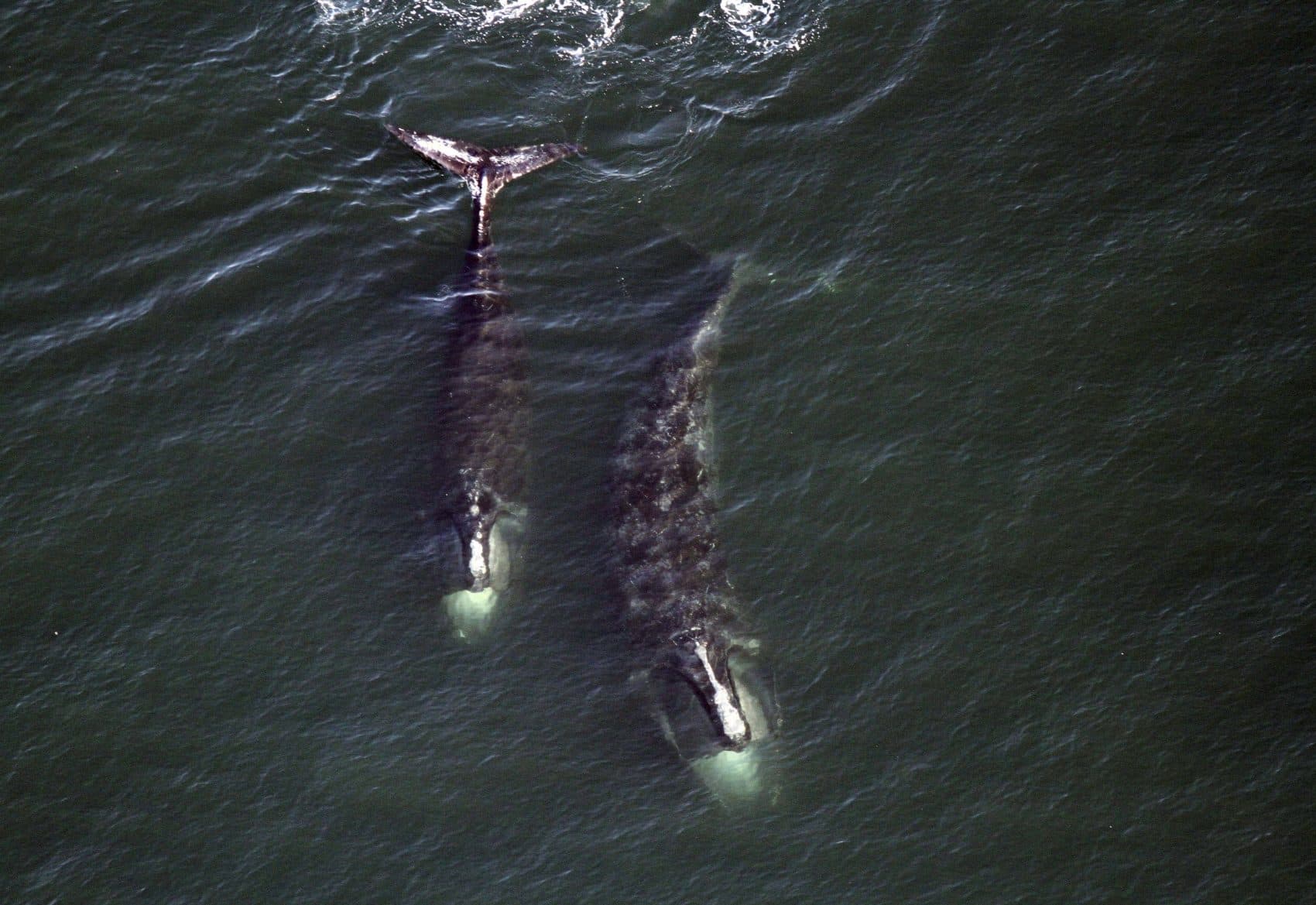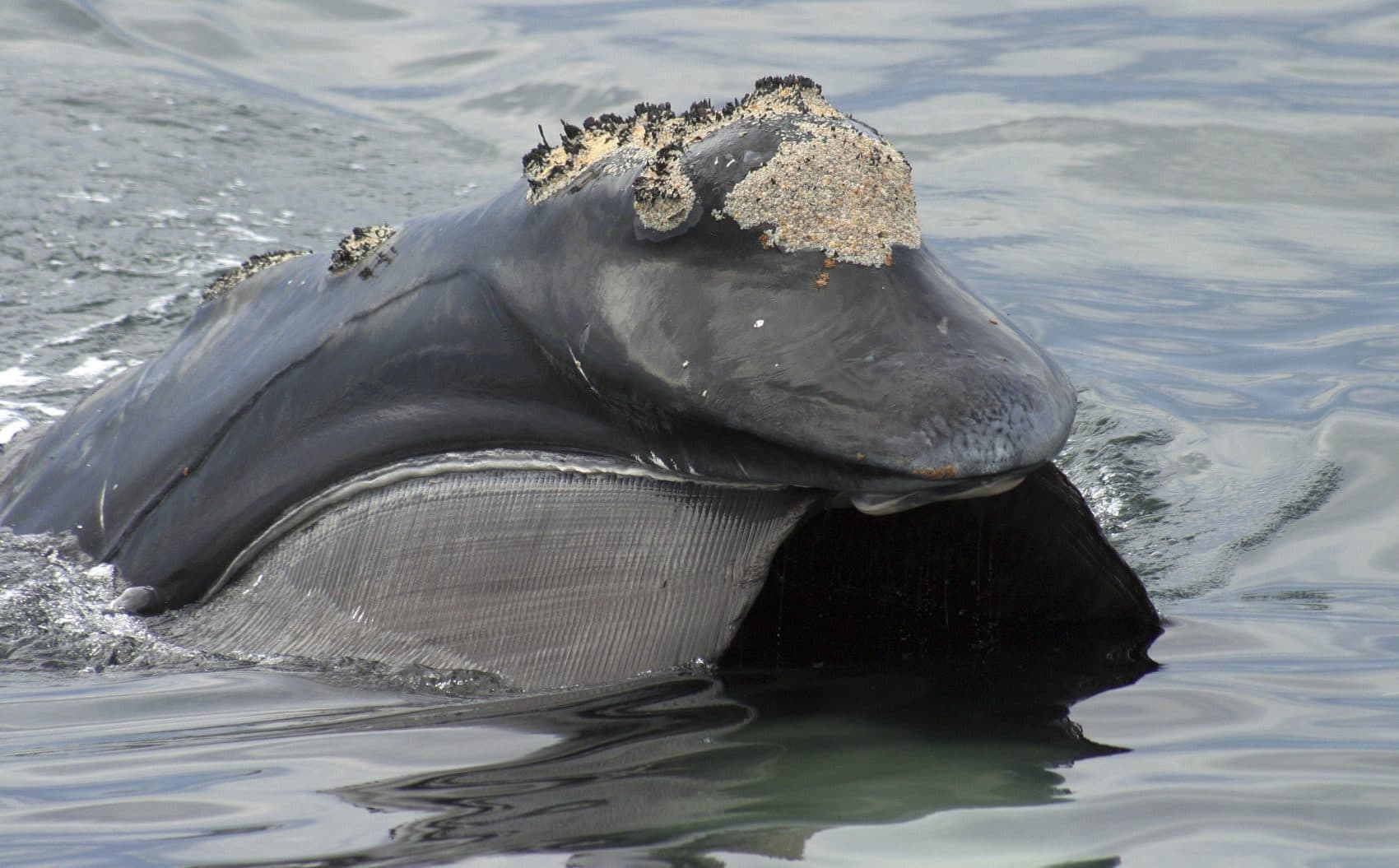Advertisement
Q&A: Expert Says Increased Right Whale Sightings Is Worrisome For Endangered Species

Those endangered North Atlantic right whales cavorting in Cape Cod Bay are fun to watch, but their frolicking doesn't tell the whole story.
Charles "Stormy" Mayo, director of right whale ecology at the federally funded Center for Coastal Studies in Provincetown, says ominous signs suggest the global population of 500 animals is slowly declining — not incrementally rebounding as experts had hoped a year ago.
And the whales, it turns out, can be pretty ornery.
The Associated Press asked Mayo about how the whales — some of the rarest creatures on the planet — are really faring.
Right whales are back in Cape Cod Bay for the second spring in a row. That must make you pretty happy?
Not entirely. The whole story on right whales is very simple arithmetic: How many die and how many are born? The birth rate this year is extraordinarily low. We've only seen four whales born in the North Atlantic. And the mortality rate is up.
How many have died?
There have been at least four deaths, but those are whales whose carcasses have been found. We know more whales have died offshore and haven't been found. The result is a decline in the population. It's troubling because we can't seem to control the human causes -- entanglements and ship strikes -- and we're not sure why more calves aren't being born.
And yet so many of these animals are being seen. Isn't that good news?
These are extraordinarily rare animals whose habitat stretches theoretically all the way to Spain, so yes. During a single eight-hour spotting flight, we've seen 200 whales. That's 40 percent of the estimated population. But we have to ask ourselves why they're feeding here now. It may indicate that the places they used to feed are failing. When they make these radical changes, it's a little worrisome.
What's the biggest threat to these whales?
Vessel strikes seem to have dropped through a collective effort by the National Oceanic and Atmospheric Administration and the U.S. Coast Guard to reduce speed in certain shipping channels. So now, if there are collisions, they're less severe. But entanglements in fishing gear are a big problem. Eighty percent of the population bears entanglement scars. As we speak, somewhere offshore there's a whale that's dragging gear.

What happens to whales when they're entangled?
Many manage to free themselves. But others drag gear for months, and we've seen individuals that have dragged it for years. There's some evidence that female right whales, if they've been entangled, are weakened and have a diminished capacity to reproduce. That may help explain the low calving rate. But we can't get to every animal, and it's not easy to cut the ropes off. Right whales are one of the most ornery creatures I've ever dealt with.
Really? They look so gentle.
Well, let me wrap some rope around your neck. You can't get it off. Then down comes an alien with weird hooks poking at you. Trust me: When they want to unload, they are not easy animals to deal with.
Is the public getting lulled into thinking the whales are OK just because we're seeing them every spring?
I think so. People think, `Oh, this is good stuff.' But we're looking at animals that spend a lot of time in waters where there's a lot of ship traffic, places that have a lot of fishing gear. Look at their fate during an entire year and it doesn't look so good.